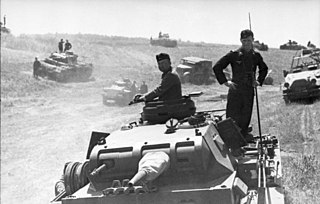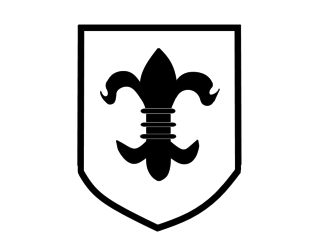History
The 370th ID was formed on February 17, 1942 in Reims, France as part of the 19th wave of infantry divisions formed during the war.
After the division had carried out security tasks in northern France, it was transferred to the southern section of the Eastern Front in June 1942 and joined the 17th Army in Army Group South. After being deployed at the Mius River, the 370 ID marched over Rostov-on-Don together with the 1st Panzer Army into the Caucasus. In January 1943, the 370th Infantry Division participated in the defense of the Kuban bridgehead. From autumn 1943 to March 1944 the division was in action near Cherson and Mykolaiv with the 6th Army. In December 1943 it was reorganized into a new type 44 division.
The 370th Infantry Division was destroyed in Romania together with the Army Group South Ukraine in August 1944 during the Second Jassy–Kishinev Offensive, and disbanded as a unit on October 9, 1944. Survivors were integrated into the 76th ID and 15th Infantry Divisions.

The German 23rd Infantry Division, later the 26th Panzer Division, was a military unit operational during World War II. It was organized along standard lines for a German infantry division. It was non-motorised and relied on horse-drawn wagons for its mobility. The unit carried the nickname Grenadierkopf.

The 13th Panzer Division was a unit of the German Army during World War II, established in 1940.
The 21st Panzer Division was a German armoured division best known for its role in the battles of the North African Campaign from 1941–1943 during World War II when it was one of the two armoured divisions making up the Deutsches Afrikakorps (DAK).
The 164th Infantry Division was an infantry division of the German Army during World War II. Formed in November 1939, the division took part in the invasion of Greece in April 1941. In January 1942, consolidating the Axis seizure of the island during the Battle of Crete, the 164th was reorganized as Fortress Division Kreta (FDK). In mid-1942 the division was transferred to North Africa and re-designated as 164th Light Afrika Division. It surrendered in May 1943 in Tunisia at the end of the North African Campaign.

The 29th Infantry Division was a unit of the German army created in the fall of 1936. It was based on the old Reichswehr 15th Infantry Regiment and drew its initial recruits from Thuringia. It was upgraded to 29th Motorized Infantry Division in the fall of 1937. The division was also known as the Falke-Division.

The 3rd Infantry Division was an infantry division of the German Army that fought in World War II. The division was established under the cover name Wehrgauleitung Frankfurt in 1934 by expanding the 3rd Division of the Reichswehr. It was redesignated Kommandant von Frankfurt shortly afterward, and took on its bona fide name when the formation of the Wehrmacht was announced in October 1935. In March 1939 the division took part in the invasion and occupation of Czechoslovakia.

The 110th Infantry division of German Army (Wehrmacht) was formed in April 1940 in Lüneburg under the 11. Armee and was commanded by Generalleutnant Ernst Seifert. Until June 1941 and the commencement of Operation Barbarossa on the 22nd day of that month, it was stationed in Poland. It fought on the Eastern Front as part of Army Group Centre, VI Corps and had, by the end of the war, nine Knight's Cross of the Iron Cross holders, four of whom received their awards in November 1943. The division was destroyed by Soviet forces in July 1944. The division itself consisted of three infantry regiments and an artillery regiment.

The 58th Infantry Division was a unit of the German Army (Wehrmacht) during World War II. It was formed in 1939, took part in the Battle of France in 1940, and then Operation Barbarossa in 1941. The 58th was then constantly engaged on the Eastern Front until the end of the war in 1945.

The 32nd Infantry Division of the German Army was mobilized on 1 August 1939 for the upcoming invasion of Poland. At that time, it consisted of the usual German infantry division elements: three infantry regiments of three battalions each, one three-battalion regiment of light artillery, one battalion of heavy artillery, a Panzerjäger (anti-tank) Battalion, a reconnaissance (Aufklärungs) Battalion, a Signals Battalion, a Pioneer (Engineer) Battalion, and divisional supply, medical, and administrative units.

The 87th Infantry Division was an infantry division of the German Army during the Second World War, active from 1939 to 1945.

The 246th InfantryDivision was a division of the German Wehrmacht during World War II. Towards the end of the war, it was redeployed under the name 246th Volksgrenadier Division.

The 15th Infantry Division was an infantry division of the German Army during the interwar period and World War II, active from 1934 to 1945.

The 389th Infantry Division was a German division of the Wehrmacht in the Second World War, which fought for example in the Battle of Stalingrad. It was formed on 27 January 1942 in Milowitz.

The 31st Infantry Division was a German infantry division of the Army during World War II. It participated in the invasion of Poland in 1939 then the invasion of France and the Low Countries in 1940. As part of Panzergruppe 2. of Army Group Centre, it was involved in the invasion of the Soviet Union in June 1941. After hard fighting throughout 1941 and 1942 it joined the 9th Army and fought in the Battle of Kursk in July and August 1943. Along with the rest of the 9th Army, the division conducted a fighting withdrawal for the remainder of 1943, during which it sustained heavy casualties. In the early stages of the Soviet Operation Bagration of June to August 1944, the 31st Infantry Division was destroyed, a fate which subsequently befell most of Army Group Centre. The division was officially disbanded on 18 July 1944.

The 369th (Croatian) Infantry Division was a legionary division of the German Army (Wehrmacht) during World War II.

The 256th Infantry Division was a German infantry division in World War II. They formed on August 1939 as part of the 4. Welle (wave). The division was destroyed at Vitebsk in June 1944 during Operation Bagration. The remnants of the division formed Divisions-Gruppe 256 which was assigned to Korps-Abteilung H.
The 290th Infantry Division was a German infantry division in World War II. It was formed in the Munster Training Area in Wehrkreis X on 6 February 1940 and surrendered to Soviet forces at the end of the war as part of Army Group Courland.

The 387th Infantry Division was an infantry division of the German Army during the Second World War, active from 1942 to 1944. It saw active service on the Eastern Front and was destroyed in fighting in Romania in August 1944.
The XXIV Army Corps was a unit of the German Army during World War II. The unit was re-designated several times; originally being Generalkommando der Grenztruppen Saarpfalz, later Generalkommando XXIV. Armeekorps, then XXIV. Armeekorps (mot.) and finally XXIV. Panzerkorps.

The 376th Infantry Division was an infantry division of the German Army during World War II, active from 1942 to 1944 in two separate instances.















